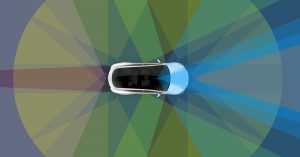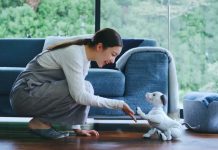Regulation woes can’t keep Tesla down. Despite governing bodies in both Germany and the state of California criticizing the automaker for misleading consumers about what Autopilot can do, Tesla refuses to miss a beat in its steady march forward.
And on Wednesday, Tesla CEO Elon Musk announced the arrival of the technology’s latest and greatest metamorphosis yet. All Tesla cars will start coming with fully self-driving hardware.
In the announcement, Tesla outlines some of the hardware changes they’re making:
“Eight surround cameras provide 360 degree visibility around the car at up to 250 meters of range. Twelve updated ultrasonic sensors complement this vision, allowing for detection of both hard and soft objects at nearly twice the distance of the prior system. A forward-facing radar with enhanced processing provides additional data about the world on a redundant wavelength, capable of seeing through heavy rain, fog, dust and even the car ahead.”
For now, this is simply a hardware upgrade. The self-driving functionality isn’t ready to go primetime. But ever the overachiever, Musk predicts we’ll start spotting them driving themselves cross-country by the end of 2017 – up one year from his previous prediction of 2018.
In the meantime, new cars will come with a limited Autopilot system while Tesla works out kinks in the new hardware. They won’t be able to do some of the things the current Autopilot can do such as providing emergency braking, collision warning, lane holding, and active cruise control.
This massive overhaul of self-driving technology is coming in the wake of growing criticism about Autopilot and whether Tesla is overselling their cars’ abilities.
Last week, German Transport Minister Alexander Dobrindt demanded Tesla rename Autopilot because it implied drivers don’t need to pay attention or keep their hands on the steering wheel. In a similar move, the California Department of Motor Vehicles (DMV) issued draft regulation demanding Tesla remove the terms “self-driving,” “automated,” or “auto-pilot” from their advertisements.
Just two months ago, Tesla revised its Chinese website by removing terms that meant “self-driving” in Chinese. This was in reaction to a Beijing accident in which a driver crashed into a partially parked vehicle. Tesla claims the accident was the driver’s fault for not keeping his hands on the wheel while the driver says he was misled about what the Autopilot feature could do. And earlier this spring, Tesla found itself at the center of a media firestorm after a Florida man died in a crash while using Autopilot.
There’s been no shortage of bad press covering Tesla’s semi-automated driving system. And it’s possible that by ratcheting up the technology to fully self-driving status, Tesla will in fact alleviate some of the scrutiny targeting Autopilot today. Realistically, it’s hard to convince drivers to keep their hands on the wheel when the car seems to be doing just fine driving itself. It looks like Tesla understands that as well.










